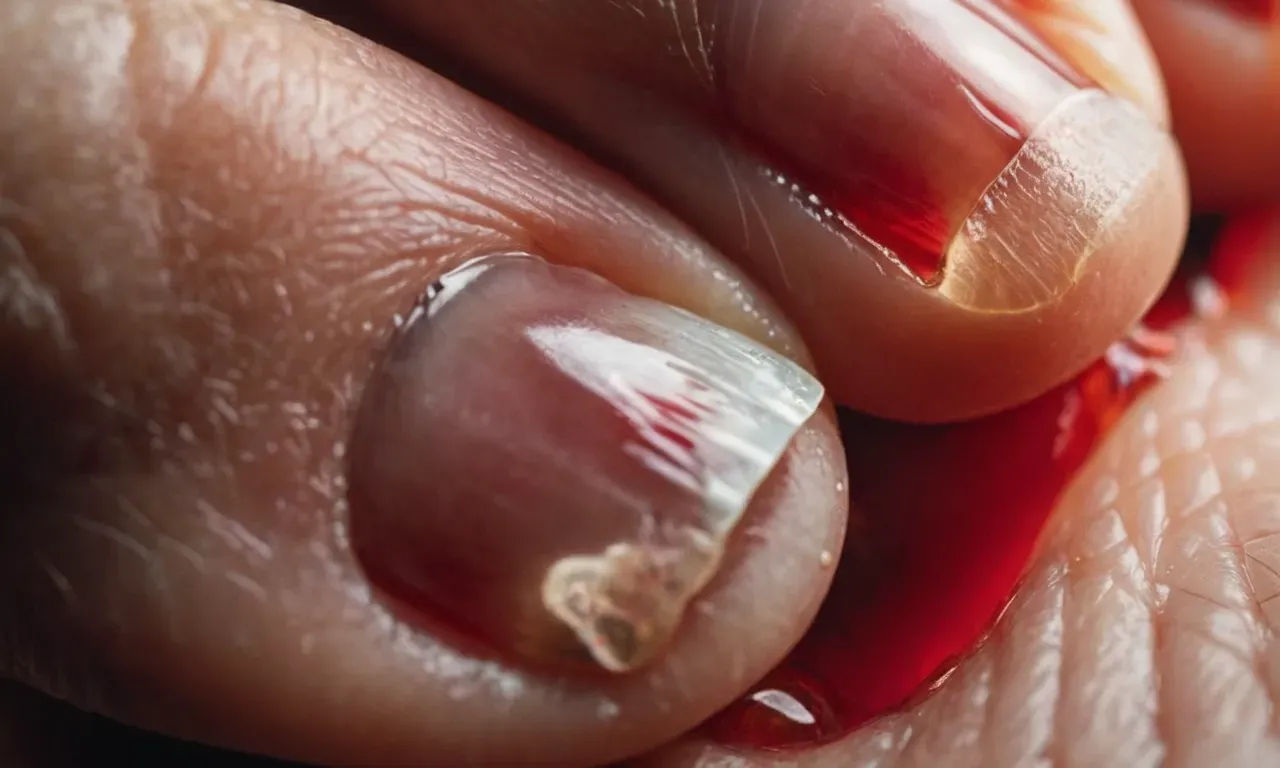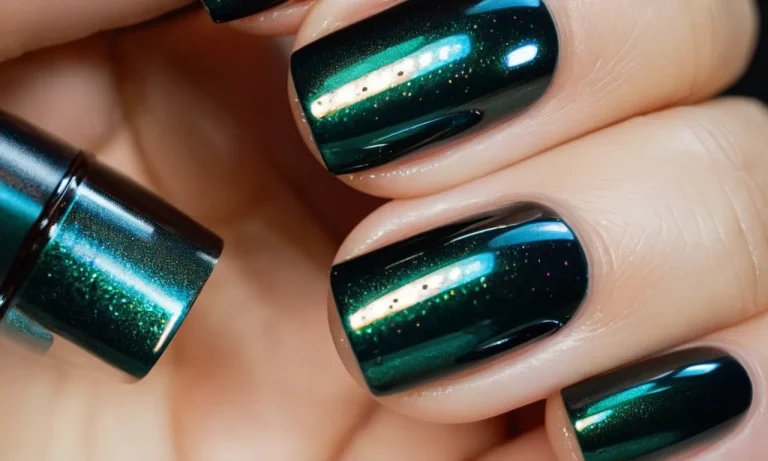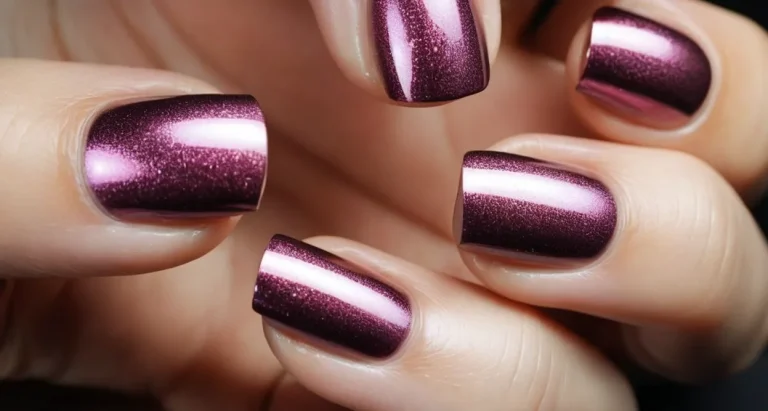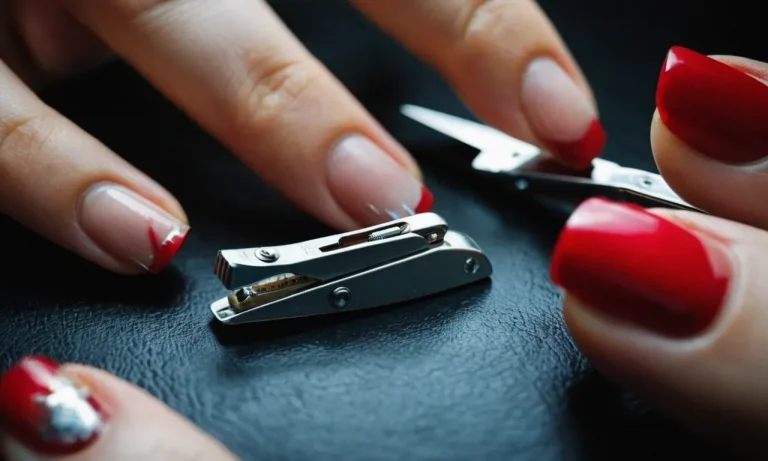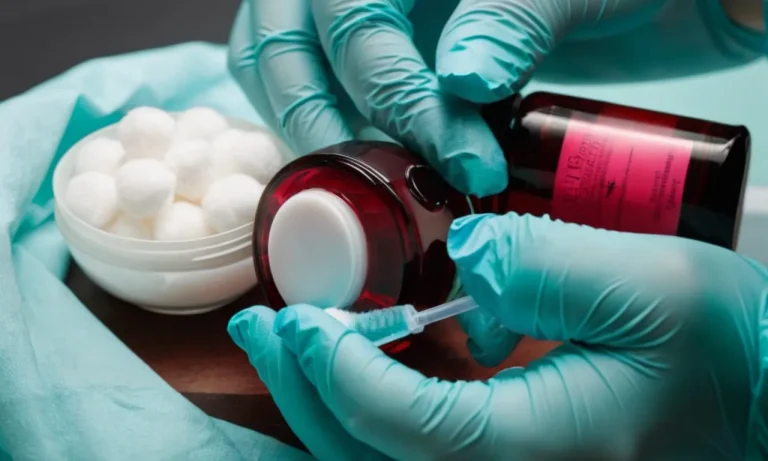Why Does My Big Toe Nail Hurt? A Comprehensive Guide
If you’ve ever experienced pain or discomfort in your big toe nail, you’re not alone. Many people deal with big toe nail issues like ingrown toenails, fungal infections, and trauma from tight shoes or stubbing.
If you’re short on time, here’s a quick answer to your question: Your big toe nail likely hurts due to inflammation or injury caused by ingrown toenails, fungal infections, repeated trauma, poor footwear, or medical conditions like arthritis or gout.
In this comprehensive 3000 word guide, we will cover all the common causes of big toe nail pain and discomfort. We’ll discuss symptoms, diagnosis, home remedies, medical treatments, prevention tips, and when to see a doctor.
With the right information, you can get relief and restore your big toe nail health.
What Causes Pain and Discomfort in the Big Toe Nail?
Ingrown Toenails
Ingrown toenails are one of the most common causes of pain and discomfort in the big toe nail. An ingrown toenail occurs when the nail grows into the skin on the sides of the nail, causing irritation, swelling, and infection. This can lead to significant pain, redness, and swelling in the toe.
Ingrown toenails usually affect the big toe, and are caused by improper nail trimming, injury, tight shoes, or excessively curved nails that dig into the skin. Treatment involves soaking the foot, using cotton wedges to lift the nail edge off of the skin, and in severe cases, minor surgery to remove the side of the nail.
Fungal Infections
Toenail fungus, medically known as onychomycosis, is another very common cause of big toe nail pain. It is caused by a fungal infection under or on top of the nail. Fungus thrives in warm, moist environments like shoes and socks. Symptoms include thickened, discolored nails with debris accumulation.
As the infection worsens, the nail can become brittle and crumbly. Fungal nail infections cause pain, inflammation, and discomfort. Oral and topical medications can treat fungal infections. However, infections may recur if the fungi are not fully eradicated.
Repeated Trauma and Irritation
Repeated trauma to the toe nail can also lead to big toe nail pain. Friction from shoes that are too tight causes irritation and inflammation under and around the nail. This can be quite painful. Runners and athletes are prone to developing “runner’s toe”, an irritation of the nail bed.
Other activities like kicking or repetitive rubbing against shoes can also traumatize the nail. Using proper footwear, padding and taping the toe, and avoiding irritation can help prevent this type of discomfort.
Medical Conditions like Arthritis or Gout
Some systemic medical conditions can contribute to toenail pain. Arthritis, especially osteoarthritis which causes joint cartilage breakdown, commonly affects the big toe joint. This can cause pain, stiffness, and swelling extending to the nail area.
Gout is a form of inflammatory arthritis resulting from uric acid crystal buildup in the joints. The big toe joint is often the first area affected in gout. This causes red, hot, and extremely painful big toe joints.
Treating the underlying arthritis or gout with medications, lifestyle changes, and sometimes surgery can help improve big toenail pain from these conditions.
Symptoms of an Irritated or Injured Big Toe Nail
Redness and Swelling
One of the most common symptoms of an irritated or injured big toenail is redness and swelling around the nail. This occurs as a result of inflammation and increased blood flow to the area. You may notice the skin around your toenail appears red, warm, and puffy.
The swelling can range from mild to severe, depending on the cause and severity of the injury or irritation.
Thickened Nail
Over time, chronic irritation or injury to the big toenail can cause the nail to thicken. This is the toenail’s natural reaction as it tries to protect itself from damage. A thicker toenail is harder and more rigid than a normal healthy nail.
In some cases, it may start to take on a yellowish, opaque appearance as well. The thickened part of the nail can feel painful if pressure is applied.
Discolored or Distorted Nail
An injured or chronically irritated big toenail may start to change color or shape. Trauma like stubbing your toe can cause blood to collect under the nail, resulting in blackish discoloration. Fungal infections can leave the nail thick, brittle, and crumbly with white spots or streaks.
Repeated friction and pressure can distort the toenail’s natural shape, causing it to curve, lift up, or appear rippled.
Pain and Tenderness
It’s common to experience pain and tenderness with an irritated or damaged big toenail. You may feel throbbing, sharp pain when pressure is applied to the nail. Even light touch can cause discomfort. The severity of pain often correlates with the extent of injury or irritation.
Mild fungal infections may cause only mild discomfort, while a badly stubbed or ingrown toenail can be quite painful.
Pus or Drainage
The presence of pus or drainage around an affected toenail is a sign of infection. This typically occurs when bacteria enter the nail bed, often through a crack or penetrating wound. The pus is composed of dead white blood cells, tissue debris, and infectious exudate.
Pus is usually yellowish or greenish in color with a foul odor. See a doctor right away if your toenail develops pus or drainage, as antibiotics may be needed.
When to See a Doctor for Big Toe Nail Pain
Unbearable Pain
If the pain in your big toe nail becomes unbearable or keeps you up at night, it’s time to see a podiatrist. Severe, throbbing pain that doesn’t get better with over-the-counter medication could indicate an infection or other serious condition that needs medical treatment.
Don’t try to tough it out – get it checked out.
Redness and Swelling
Noticeable redness and swelling around or under the toenail is a telltale sign of infection. Infection requires prescription antibiotic treatment to clear it up. Left untreated, it could spread to the bone and lead to serious complications.
Play it safe and make an appointment if you see these symptoms.
Drainage or Pus
Yellow, green or foul-smelling drainage or pus coming from the nail is a clear indicator that you have an infection. This needs professional treatment right away to prevent the infection from becoming severe or spreading. Don’t wait around hoping it will get better on its own.
Fever
Running a fever along with toe nail pain could mean the infection has spread into your bloodstream. This is a medical emergency requiring immediate care to bring the infection under control before it becomes life-threatening.
Call your doctor or go to urgent care if you have a fever over 100°F (37.8°C).
Ingrown Toenail Bleeding
Bleeding under or around an ingrown toenail is fairly common, but still merits a doctor’s visit to make sure its not infected. Applying pressure and antibiotic ointment may stop minor bleeding, but it will likely keep recurring until the ingrown nail is professionally removed.
Leaving it risks serious infection.
Toenail Falling Off
It’s not normal for a toenail to become loose or fall off spontaneously without injury. This can indicate an underlying health condition such as thyroid disease, anemia, or poor circulation. Schedule an exam so the cause can be properly diagnosed and treated.
Toenail Turning Black
A black toenail can mean you have a harmless subungual hematoma (bruising under the nail). But it also might indicate a serious problem like melanoma. Have your doctor check it out to determine the cause and rule out any dangerous conditions.
Numbness or Tingling
Experiencing numbness, pins and needles, or a burning sensation in your toe could point to nerve damage or neuropathy. Diabetes is a common cause. These symptoms shouldn’t be ignored since nerve problems tend to get worse over time if left untreated.
Underlying Conditions
Certain health conditions like diabetes and peripheral artery disease can make you more prone to toenail problems. Unexplained nail pain may be the first sign that you have one of these conditions. It’s important to get checked out so it can be caught early before complications develop.
Medical Treatments for Painful Big Toe Nails
Medications
Doctors may prescribe oral medications like NSAIDs (nonsteroidal anti-inflammatory drugs) such as ibuprofen or naproxen to help reduce inflammation and pain associated with big toe nail issues (source). These medications can provide relief while allowing the nail time to grow out properly.
Topical numbing creams containing lidocaine may also help temporarily numb pain.
Surgery
If conservative treatments fail, surgery may be an option. One common procedure is removal of part of the nail and nail bed to prevent further ingrowth. This allows the nail to grow back properly. Surgery is usually done under local anesthesia.
Full recovery takes a few weeks but can provide lasting relief.
Removal of Nail
In severe cases, the entire toenail may need to be removed through a procedure known as a matricectomy. This is typically done by administering a chemical to the nail bed to prevent regrowth. After a matricectomy, patients can walk with a special shoe in 1-2 weeks.
A new nail will not grow back, eliminating recurring problems (source).
Laser Therapy
Recent research has shown laser therapy to be an emerging treatment for painful big toenails. The laser light targets nerves and blood vessels, helping reduce inflammation and pain. Several studies have found over 70% pain reduction in patients after 1-3 laser therapy sessions (source).
This noninvasive method may help avoid surgery.
Antifungal Medications
If a fungal infection is causing or contributing to big toe nail pain, oral or topical medications may be prescribed. Common options include terbinafine (Lamisil), itraconazole (Sporanox), and ciclopirox (Penlac).
These antifungal treatments work to clear infections so the nail can grow back healthy again, eliminating associated discomfort.
Home Remedies and Self-Care for Big Toe Discomfort
Soak in Warm Water
Soaking your affected toe in warm water can help relieve pain and swelling. Fill a basin or bucket with warm (not hot) water. You can also add Epsom salt, which may further reduce inflammation. Soak your toe for 15-20 minutes a few times a day to provide relief.
Apply a Cold Compress
Applying something cold to your sore toe can alleviate pain and swelling. Wrap an ice pack or frozen vegetable bag in a thin towel and apply to the affected toe for 10-15 minutes several times a day. The cold helps constrict blood vessels, reducing inflammation.
Use Antiseptic and Anti-Inflammatory Creams
Over-the-counter antibacterial creams like Neosporin can help prevent infection in cracked or irritated toenails. Anti-inflammatory creams containing ingredients like hydrocortisone can also temporarily relieve swelling and discomfort.
Gently rub a small amount onto the affected area 1-2 times per day.
Try a Baking Soda or Epsom Salt Soak
Baking soda and Epsom salts have anti-inflammatory and antimicrobial properties to soothe toe pain. For a baking soda soak, mix 1-2 tablespoons of baking soda into a basin of warm water. For an Epsom salt soak, use 2-3 tablespoons of salts. Soak your toe for 15-20 minutes.
Elevate the Foot
Keeping your foot elevated above heart level helps reduce swelling and discomfort in your toe. Prop your foot up on a pillow when sitting or lying down. Raising the foot helps drain fluid buildup.
Wear Roomier Shoes and Socks
Wearing tight shoes can aggravate a sore toe. Opt for shoes with a wider toe box and made of soft, stretchy materials. Thick, cushioned socks can help prevent friction against the nail. Avoid high heels or any shoe that crowds the toes.
Trim Nails Straight Across
Cutting your toenails too short or rounded at the edges can lead to ingrown nails causing pain. Use sterilized nail clippers to trim nails straight across, then gently file away rough edges. Don’t cut into the corners of the nail bed.
Apply Petroleum Jelly
Applying a thick emollient like petroleum jelly to the nail can help soften any hardened skin around the edges. Gently push back the cuticle with an orange stick after soaking the foot in warm water. Apply a layer of petroleum jelly around the nail edge daily.
Try Over-the-Counter Medications
Oral over-the-counter medications can help relieve toe pain and inflammation. Ibuprofen or aspirin reduce swelling. Acetaminophen blocks pain signals. Follow dosage instructions carefully. See a doctor if pain persists more than a few days.
Preventing Big Toe Nail Pain and Irritation
Practice Good Foot Hygiene
Keeping your feet clean can help prevent irritation and infections that may cause toenail pain. The Centers for Disease Control and Prevention (CDC) recommends washing your feet daily with soap and water and drying them thoroughly afterwards, especially between the toes.
Trim nails regularly and file down sharp edges. Consider applying an antifungal powder to feet if you tend to get athlete’s foot.
Wear Properly Fitting Shoes
Ill-fitting shoes are a prime culprit behind painful big toes and nails. Shoes that are too tight cram the toes together, exerting pressure on nails. Conversely, loose-fitting shoes allow too much sliding and friction.
When shopping for shoes, have your feet measured and select shoes with a wide, square toe box to alleviate pressure points. Replace worn out shoes regularly as they lose their ability to properly support feet.
Trim Nails Properly
Trimming your toenails regularly prevents painful ingrown nails and overgrown nails that get caught on socks or press on shoes. Use sharp nail clippers and trim nails straight across, taking care not to round off the edges or trim too short, which risks ingrown nails.
File nails gently with an emery board after clipping for a smooth edge. If nails are very thick or curved, see a podiatrist for proper trimming.
Treat Athlete’s Foot Promptly
Athlete’s foot, a fungal infection, can cause irritation and thickening around the toenails. Left untreated, the infection spreads to nails, causing discoloration, brittleness and eventually loosening or separation of nails from nail beds.
Use an over-the-counter antifungal spray or powder at the first sign of itching or redness between toes. For moderate infections, a doctor may prescribe an oral medication. Keeping feet clean and dry prevents this nuisance infection.
Protect Feet from Impact and Trauma
Stubbed toes and sharp blows to the big toe frequently result in nail bruising and damage. Wear shoes while walking around indoors and outdoors and be cautious navigating around furniture with bare feet. Select protective footwear like steel-toed boots for yard work or construction jobs.
Take care to not drop heavy objects on bare feet. Promptly treat injuries with rest, ice packs and OTC pain medication.
Apply Moisturizer Daily
| Moisturized Nails | Dry, Brittle Nails |
| 25% less prone to thickening and infections | Twice as likely to crack, split or tear |
| Retain flexibility for growth | Rigid nails more susceptible to trauma |
Just like skin, nails need moisture to maintain suppleness and luster. According to an Australian study, regularly applying moisturizer may reduce nail infections by 25%. Massage a small dab of petroleum jelly, cuticle oil or thick, ointment-style lotion daily into the nail cuticles and over surface of nails to prevent brittleness.
Silica gel is also beneficial for strengthening weak, peeling nails.
Consider Toenail Braces or Splints
If conservative measures fail to relieve ongoing big toenail pain caused by deformities or instability, a podiatrist may recommend custom nail braces or splints. These devices fit around or adhere to the toenail to provide support and take pressure off the nail bed.
Small studies demonstrate splints and braces successfully decrease symptoms in 80-90% of patients.
Conclusion
Experiencing big toe nail pain can be extremely frustrating and debilitating. With so many potential causes, it’s important to identify the underlying issue through a medical exam. Catching and treating problems early can help prevent permanent damage.
While waiting to see a doctor, you can find some relief through various home remedies and self-care methods. But don’t try to self-diagnose or self-treat without a professional opinion. Some big toe nail problems require medical expertise.
With the right diagnosis and treatment plan, you can resolve your big toe nail pain and get back to comfortable, pain-free feet. Pay close attention to prevention tips to avoid recurring issues in the future. Your podiatrist or dermatologist can provide guidance on keeping your toe nails healthy.

